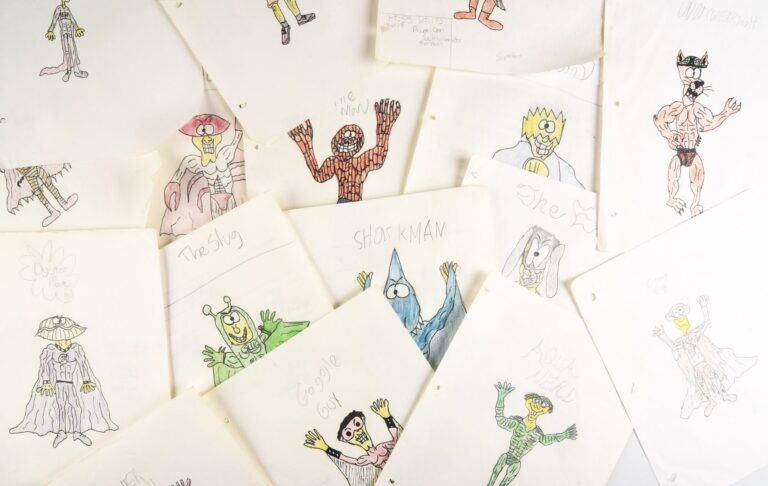“It’s the coolest part about writing, that you never know where it is going to wash up”: An Interview with Maggie Smith
“Stop straining to hold the door to the past open, as if your old life is there, waiting, and you could just clip right in. Stop wasting your strength, because you can’t go back. Muscle your way forward.” In Keep Moving, her first nonfiction offering, Smith is at work closing the door to her past, working her way forward from the calamity of her divorce, following which she did what perhaps only a poet would do: took to Twitter to offer herself a daily public pep talk in the form of three sentences or less. These pieces, which make up roughly half of Keep Moving, are like poems with purpose. Their language is direct, insightful, and sharp, and they create an optimistic, positive, and inspiring spirit in the reader. Much like Smith’s poetry, which is often intimate and sparse, the tweets astutely blend compression with meaning, making each word count far beyond its letters.
Beautifully designed into full-color, textual graphics by Oliver Munday, these pieces chronicle Smith’s struggle to grieve, to mourn, and to stay creative and keep moving in the face of personal obstacles. The real beauty of the Keep Moving, though, is that it isn’t simply a collection of Smith’s tweets. What breathes further life into the book’s pages is Smith’s hindsight commentary, which segments the book via paragraphs of expansion on the real-life situations she was experiencing as she wrote, as well as her thoughts about the writing itself. All of this makes for an even more beautiful body for the lilting, incisive, insightful tweets that started it all.
“When I write a poem, I don’t begin with an idea and then seek the language for it; I begin with language and follow where it leads me. But now I had ideas to work through, stories to tell, and I knew I would need a different kind of writing, a different container for my thoughts,” Smith writes. Smith didn’t go to any usual well for this “different container.” If done in a more standard fashion, Keep Moving could have looked like a guidebook of aphorisms tweeted by a poet. Instead, the book delivers both in the poetic language that gilds each separate piece and in the graciously personal depth of each Tweet. Smith isn’t seeking to give advice, to guide, to steer; she is venting, railing, encouraging, and flaying open her own loss and grief for the world to see. These works aren’t aphorisms. They are a personal call to action made public: “Remember putting on glasses for the first time: suddenly, the trees had individual leaves; the moon had defined edges,” she writes. “Try to see through that clear lens—everything as it is, not blurred or diffused by grief or anger. Look around you and marvel.”
Keep Moving will find a home in many homes, a place on shelves all over the world. It revels in the whittled and finite poetic kernels of Smith’s grieving and loss, though in the end, it is much larger than any individual, much taller than a personal stack of obstacles. Keep Moving has the ability to look inside of us and see our struggles too, to find our weaknesses, our yearning for betterment, and our hope for tomorrow in the face of loss and change.
I recently spoke with Smith about the coldness of the aphorists, who the “you” she addresses in her pieces is, and the brain food of poetry.
J.A. Tyler: Though Keep Moving connects wonderfully with writers like Cleo Wade and Anne Lamott, it also makes me think of Poor Richard’s Almanack and Mark Twain. How does this book converse with those earlier aphorists?
Maggie Smith: My editor and I have called them aphorisms, we’ve called them maxims, we’ve called them quotes. I always called them “notes to self” and that’s how I think of them. When I think of an aphorism I think of them as being an outward-facing piece of writing, a piece of writing that you do for others because you have some wisdom to impart, something that’s clever and wise and witty, even snarky. The spirit in which these were written is a different spirit than that tradition. If you look at something like “haste makes waste,” I’m not thinking of what [Benjamin] Franklin was feeling or going through in his life when he wrote that. So part of what I hope readers get from the book is that they feel more intimate and personal because they were coming from a more personal and intimate space. In a classic aphorism I don’t think that the aphorist reveals herself in the aphorism. It feels almost like a fortune cookie, with the particulars scrubbed out.
JAT: Most of the book is written to “you.” When you wrote this, who were you picturing? Who is the “you”?
MS: I was just writing to me. So the you in all of these quotes is me. It’s just self-talk that a lot of other people eavesdropped on, on social media. I would get funny DMs like, “Were you hiding in my closet? Are you on my group chat?” It’s been really cool to see how something that I wrote really specifically for myself, on a specific day for a specific reason, would be applicable in some broad way to people I don’t know, who are going through completely different things. The spirit of them is tinged with grief and loss. Some of them are angry. Some of them are just plum confused. But it’s just me. None of this book was written from a position of “up here,” sharing with people who are two steps lower than I am. I am just talking to myself trying to get myself through one day at a time. The book was never going to be a book either. It started as me tweeting a tiny self-pep talk every day and I’ve never written a book like that. Normally I write enough poems for a book and then I do the job of organizing it, seeing what the form and arc and shape might be, and then I have a finished product. This came about in a completely reverse way. I was just writing this stuff for myself but posting it publicly as a way to hold myself accountable to what was in those quotes.
JAT: If social media were not there, would you have sat down and journaled these?
MS: No, I don’t think so. I’ve never kept a diary, I’m not a journaler. I’m not even a write-every-day kind of human. I wish I were. I try to do something in service of my writing every day whether it is revising something that is giving me fits or submitting work. And honestly, I probably would have thought these things, and maybe written some of them down, but what really kept it going ultimately was the response from other people. So at a time when I felt really alone, I put little paper boats in the water and shoved them off and people were getting them in places I’d never been to. It’s the coolest part about writing, that you never know where it is going to wash up, who’s going to receive it, and what they might be going through. It might be exactly what you’re going through, or it might be totally different, but somehow what you said didn’t change their life but made that hour of that day a little more bearable, which is honestly plenty.
JAT: Keep Moving hinges on density, on making everything smaller and tighter. Where does this need for potency come from, this desire to revise and cut, to increase the magic through a compression of words?
MS: I do joke in the book that I’m a whittler, so when I revise, things get smaller. I know people who when they revise, the work grows and gets wilder. I find that really exciting, but that’s not how I work. That’s probably why I’m primarily a poet, in that I’m always working to get to the bone, to the essential thing. So I’m always asking myself when I write, What’s essential here? I’ve always been most interested in thinking about how to say what I want to say in a small and tight and concise way. But the quotes in the book, those I wrote in the morning, every day, usually before I had my coffee, sometimes in bed on my phone in the dark before I’d even gotten up. It was sort of a way of setting my intention for the day. If I woke up feeling nervous or sad or panicky or stressed or whatever, I would get my headspace right before I had to pack lunches or have a meeting or do work, I would try to have that be the setting of the scene for myself. So I didn’t really spend a lot of time writing them, because they’re short, and I just wanted to get to that first thing in the morning.
JAT: So any revision was organic, as you said, in bed on your phone, not really thinking yet about sentence construction, grammar, just this kernel of a moment I need to have down right now?
MS: Right, but it’s also intuitive because when you write and read constantly you know the weight of a good sentence in your hands or in your ears or in your mouth. I’m a poet, so I write with an ear for sound, with a metaphor-based center of gravity, that’s where my thinking lives. So a lot of them are metaphorical and a lot of them do probably have alliteration and assonance, sound play in them, but that’s just how I make sentences. So if I wrote different kinds of sentences for work, probably these would have come out sounding different, but I’m a poet.
JAT: If we switch gears and talk about the physical object of the book, the interior design by Oliver Munday is stunning. How did this elegant and simple approach to the book’s graphics come about? Is this a visual nod to that same compression and potency?
MS: I’m so pleased with the design; I’m such a fan of Oliver’s work. We had a conversation early on about what the book would look like, because it was important to me that each quote get its own page, its own headspace. Like in a book of poems, you don’t have multiple poems per page. You get to spend time with that thing, then you turn, and you spend time with the next thing. It was important to me that everything had its gallery space, and that the reading experience of the book could be in a sense like poetry in that you could dip in, flip around a little bit, read a few quotes, and shut it. I really wanted the spirit of the design to match or align with the spirit of the book, which was much more vibrant and focused on reliance than on “sad things happened and I figured out how to get through it.”
JAT: Nikki Giovanni and Emily Dickinson are quoted in Keep Moving, and I’d love to know who else speaks the loudest to you. Who inspires you as an artist? As a parent? As a person?
MS: I read primarily poetry. I’m reading poetry all the time. As much as I can get my hands on and as wide an aesthetic as I can get my hands on. It’s brain food. There’s no way to keep myself moving forward, feeling like I’m pushing myself in my own art if I just pick the five books that I feel really comfortable with, that I really love, and then just continue to read those five books. But for me, what inspires me the most, is when people are doing things with language that I find unexpected, when I can feel a human being in the writing, when I can feel empathy and compassion and not just smarts, like there’s a little soft belly that you can sense in the writing. Most of the poets I like best are doing that. Ellen Bass’s new book Indigo. Rick Barot’s The Galleons. Victoria Chang’s Obit—talk about basically making up a new form and writing a whole book in it! It’s so innovative. It’s one of those books you just want to give a copy of to everyone. I’m also completely obsessed with Sabrina Orah Mark’s Happily series in The Paris Review. I cannot get enough of them. As soon as I see there’s a new one, I could be in the middle of making my kids dinner and I’m like, “Everybody pause!” I just want to read it right then. I’m so excited for that book.


